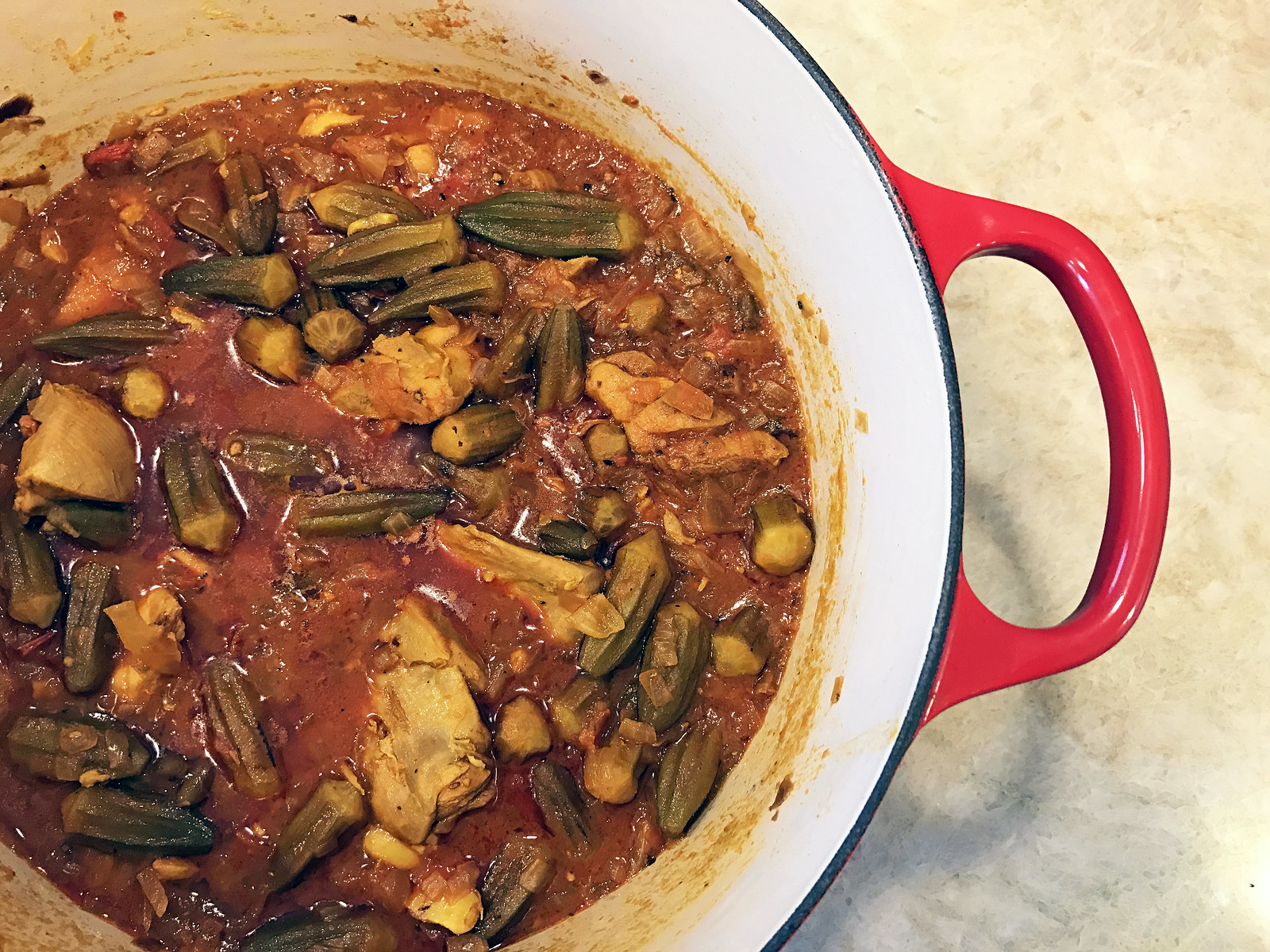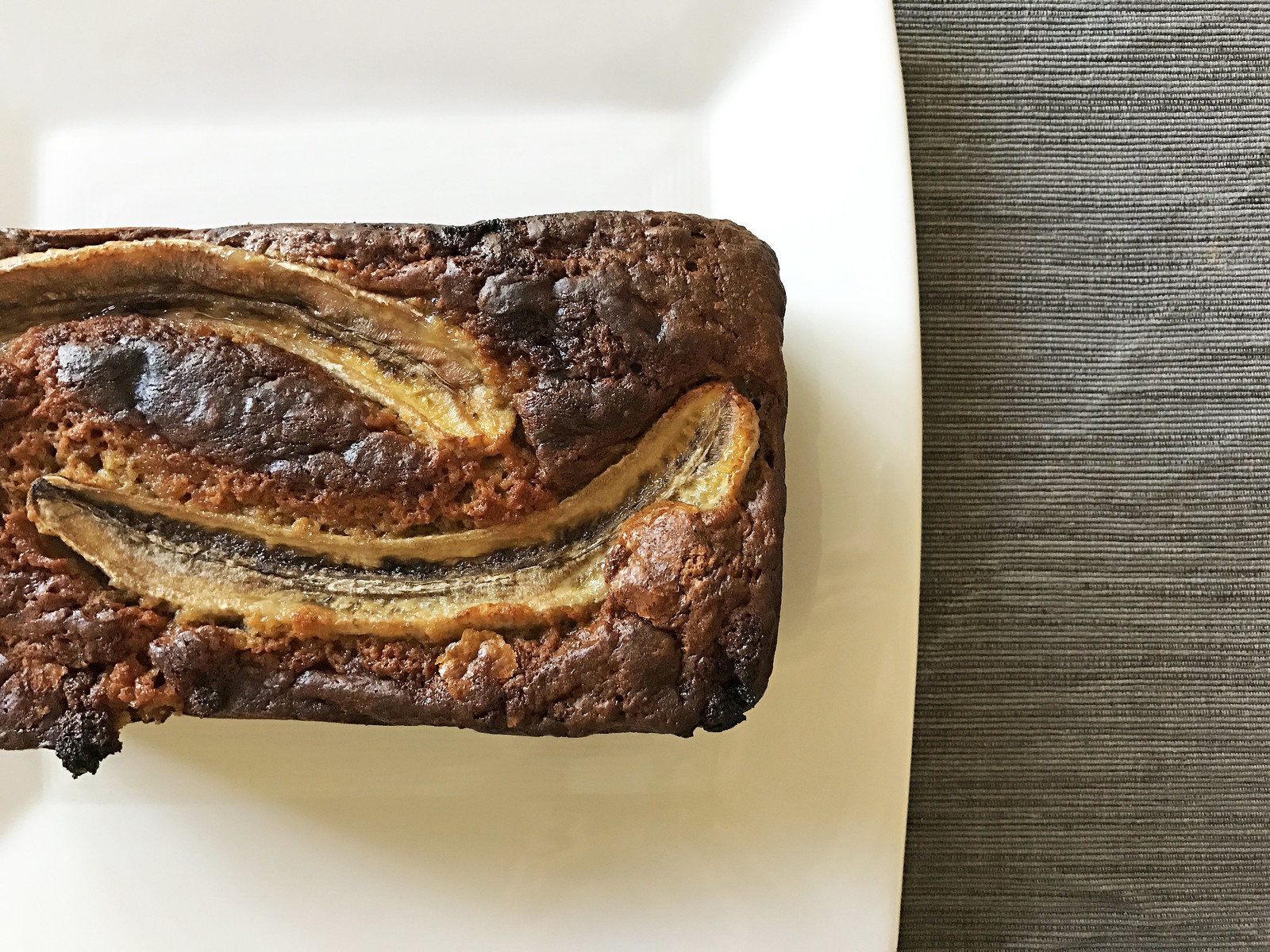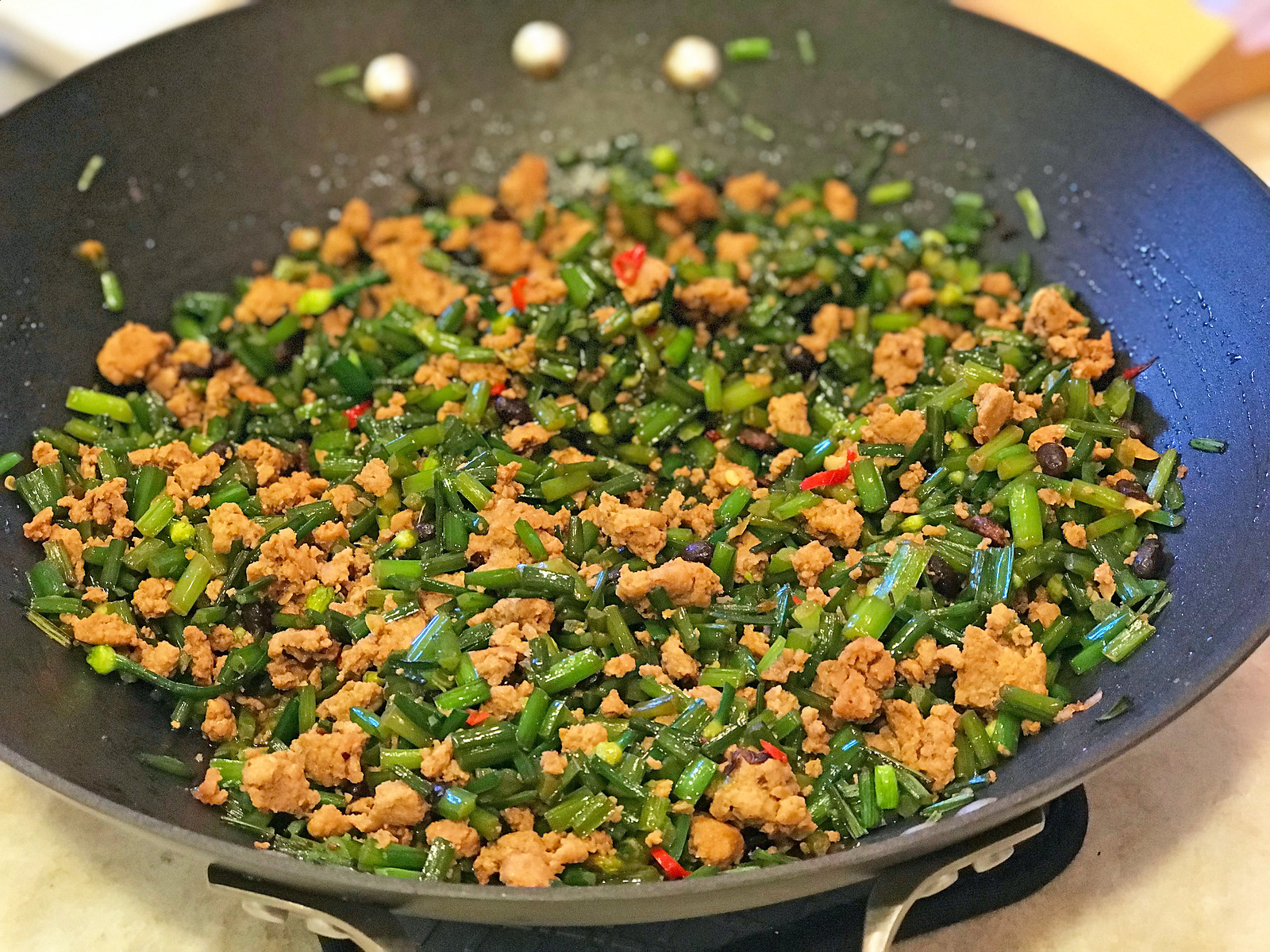For the uninitiated, khoresh is a general term for stews and curries in Iranian cuisine that are served alongside basmati rice, fresh sabzi (herbs), and torshi (pickled vegetables). From eggplant to fenugreek to split peas to pomegranates, there are countless varieties of khoresh and at gatherings you’ll see at least two types served alongside other dishes.
My favorite khoresh, though, is a less common one: khoresh-e bamieh. This okra stew hails from southern Iran and although both of my parents are from Tehran, my mom’s family grew up eating this. She introduced it to my dad when they were married, who counts it among his favorites too. And me? Well, I go crazy for this stuff. Luckily for me (and you), it’s easy to make. It’s not quite as good as my mom’s, but I’m getting there.
Like most khoreshs, it can be made vegetarian by simply omitting the meat. You can also substitute the chicken for leg of lamb that’s been cut into 2-inch cubes. Just be sure to adjust the cooking time and water accordingly.

Ingredients:
2 onions, peeled and chopped
6 cloves garlic, peeled and crushed
2 pounds skinless chicken legs and thighs
3 tablespoons olive oil
1 teaspoon salt
1/2 teaspoon pepper
1 teaspoon turmeric
3 tablespoons tomato paste
1 tomato, chopped
juice of 1 lime
1 pound fresh or frozen okra
1. In a large heavy pot or Dutch oven, brown onion, garlic, and chicken in the olive oil. Sprinkle with salt, pepper, and turmeric. Add the tomato paste and tomato. Pour in 1 1/2 cups water, cover, and simmer over low heat for 1/2 hour until the chicken is tender, stirring occasionally.
2. When the chicken is tender, add lime juice and okra. Simmer, covered, for 15 to 20 minutes over low heat. Check to see if okra is tender. Taste the stew and adjust the seasoning if needed. Serve warm with chelo (Iranian-style rice).




